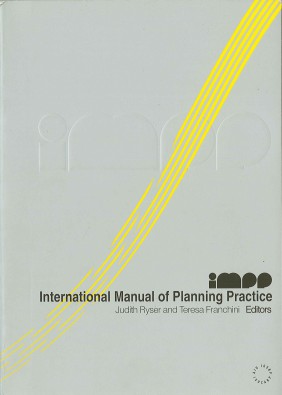
The last expanded edition of the International Manual of Planning Practice (IMPP) – volume V – was launched on World Planning Day in 2008. It was a great success for stakeholders and universities.
On the occasion of the 50th Anniversary, ISOCARP’s Judith Ryser and Teresa Franchini prepared an updated and enlarged Volume VI of the IMPP.
ISOCARP is very grateful to Judith Ryser and Teresa Franchini as well as the authors of the different articles for the IMPP.
The planning system is the key instrument which balances property rights with the public interest by translating spatial development processes into physical form. In a globalising world cities have gained importance as drivers of the economy and have become key protagonists of sustainability while development is taking place at ever increasing scale. Such dynamic evolution requires planning to adjust and innovate relentlessly.
The IMPP brings the expertise of some more than 130 authors, experienced practising planners, to the key stakeholders of the built environment. It is of interest to practising planners in both the public and the private sector, as well as to other professionals of the built environment. It also provides also a comparative reference compendium for academics and students in the field of spatial development, as well as an initial guide for planners, developers and investors with an international outlook. The IMPP is already being used around the world for international consultancy, educational purposes and as reference for international cooperation.
The IMPP contains concise comparative syntheses of planning systems and practices in more than 100 countries worldwide and an essay on the state of the art and future outlook of planning. The interactive USB stick, searchable by country, author and keyword, constitutes an integral part of the book. It contains the full papers with illustrations produced by practising planners in their respective countries, together with the most recent previous entries, a full list of authors and an extensive database of contacts of planning ministries, associations of planners and academic departments related to spatial development in these countries.
The content of the country contributions from all over the world give a comprehensive panorama of the regulated development process and puts it into the perspective of real world experiences. It is structured as follows:
- General country information: description of the general country information (text, diagrams, maps, dealing with location, size, characteristics of the country, population, GDP, government, etc.)
- Planning framework: political and institutional structure and organisation, administrative competence for planning, main planning legislation, planning and implementation instruments and development control mechanisms.
- Planning process: planning system and plan making, development control procedures, participation and appeal, other initiatives.
- Sustainability and governance: environmental protection, Agenda 21, specific complementary legislation; main stakeholders in the spatial physical development process, urban management and maintenance, and relations between built environment users; use of ICT in the planning, information dissemination and participation process
- Evaluation: planning system in practice, critical analysis of the application of the planning system in practice, focusing on the gaps between planning legislation and physical spatial development and the future prospects of the planning process, besides other relevant comments.
* This project is an iniative of the 50th Anniversary Celebrations Committee (50ACC) and led by members Judith Ryser and Teresa Franchini.

